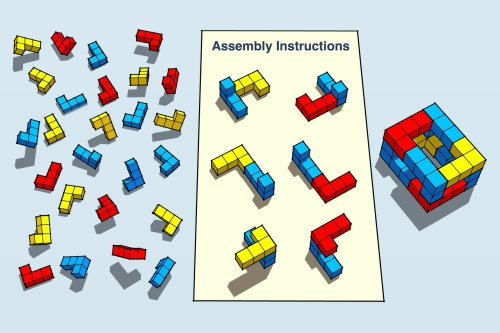An intriguing feature of virtually all networks is that small structures, known as motifs, are found more often than we would expect. Understanding how these motifs behave like building blocks for networked systems was the focus of a recent study by the University of Bristol.
Researchers from the University’s Synthetic Biology Research Centre, BrisSynBio, studied a wide range of biological and man-made networks – from regulatory networks controlling living cells, to Wikipedia voting patterns, and even US airline routes.
The team developed new methods to discover how motifs cluster and connect – effectively seeking the rules or ‘assembly instructions’ for how each complex system is built from simple parts.
They found that in each network the motifs were connected in a slightly different way, but that networks from a particular area (e.g. cellular regulatory networks from distantly related organisms) displayed similar patterns.
The findings of this study are important because many of the challenges faced by society rely on us working with large and complex networked systems. Many diseases arise due to breakdowns in existing regulatory networks within cells or the emergence of new undesired interactions. Therefore, understanding how networks are built from simple parts can help scientists find new ways to fix problems that arise.
Commenting on the potential benefits of the findings, lead author, Thomas Gorochowski said:
“In terms of real-world applications, the rules we are able to extract help us better understand how a complex system is built. An area where this information is very useful is synthetic biology. In this field, we would like to be able to engineer new types of cell to produce valuable chemicals/drugs or alter their behaviour in useful ways, e.g., to hunt down disease in our bodies. To create these sorts of systems, we need to understand how biological parts should be pieced together to function effectively. Our findings provide this information and can be used to help guide new approaches to engineering biology.”
